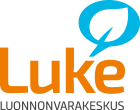Infections caused by salmonella bacteria are a major public health problem around the world. In Finland, salmonella has long been prevented from entering the production chain of food of animal origin. Consequently, the consumption of domestic food in Finland is safer in terms of salmonella than in many other European countries.
Animal disease prevention has long traditions in Finland. The farm and geographical structure of livestock production has contributed to prevention work: livestock farms are fewer and the frequency of animal transports is lower than in many other European countries. In addition, the density of livestock is lower than in Central Europe.
Finland’s climate and remote location have also contributed to the good animal disease situation.
On the eve of Finland’s accession to the EU, the salmonella situation in the country was already well under control. One way of ensuring the low prevalence of salmonella in the food chain is the national Salmonella Control Programme. In the accession negotiations, Finland received additional guarantees with regard to salmonella. Accordingly, all fresh pig meat, poultry and beef, and the production facilities of imported eggs must be screened in the country of origin for salmonella, and the result must be negative. In the EU-wide market of free movement and trade, such a derogation is a sign of recognition, at EU-level, of Finland’s achievements in anti-salmonella activities.
The Salmonella Control Programme specifies standards for the control of salmonella in production animals and food of animal origin. If salmonella is found, statutory measures must result without exception. Sweden and Norway have similar salmonella control programmes, approved by the EU Commission.
Finland’s national Salmonella Control Programme covers cattle, pigs and poultry, and meat and eggs produced from them. Within the framework of the programme, Finland is committed to keeping the occurrence of salmonella below 1% in each species covered. In the production of poultry meat and eggs, salmonella is being monitored throughout the production chain, from the grandparental or parental generation to productive poultry. In line with the programme, samples are taken at various stages of the chain, all the way from incubators to slaughterhouses and cutting plants. Sampling focuses on slaughterhouses and cutting plants in the salmonella control of cattle and pigs. In slaughterhouses and cutting plants, the aim is to keep the prevalence of salmonella at less than 5% of the batches analysed.
In the EFSA reports, it is difficult to find comparative statistics on the salmonella situation in EU Member States, due to high variation from one country to another in sample materials and quantities of samples, and the animals or strains tested. In some countries, several samples of different sizes are taken, and the results of these are presented individually. The results for many countries are completely missing, particularly in the report on pigs and cattle. Geographical coverage and comparability are best regarding the salmonella situation of broiler production.
Salmonella in broiler flocks before slaughter (flock-based data) in countries running control programmes, 2015
Source: EFSA (European Food Safety Authority) and ECDC (European Centre for Disease Prevention and Control), 2016. The European Union summary report on trends and sources of zoonoses, zoonotic agents and food-borne outbreaks in 2015. EFSA Journal 2016;14(12):4634, 231 pp. doi:10.2903/j.efsa.2016.4634, Appendix 2015_SALMBROIBS.xls
In Finland, very little salmonella is detected in animals and foodstuffs of animal origin. The prevalence of salmonella has been systematically monitored and the results reported since 1995, when the implementation of the national Salmonella Control Programme began in Finland. Information on salmonella and other diseases transmissible from animals to humans is available on the website of the Zoonosis Centre.
Database table
Photo in upper edge: Pixabay
